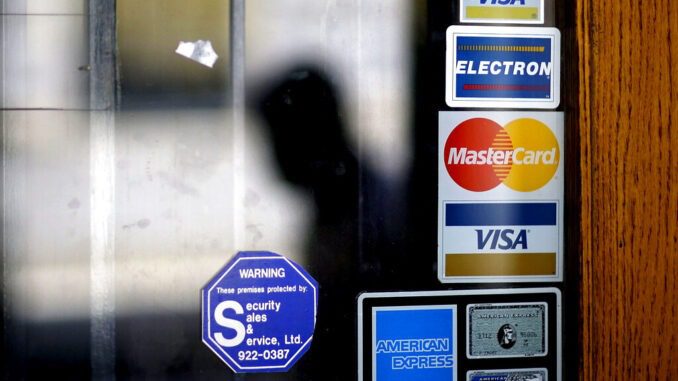
If you have high-interest consumer debt, getting control of your money in the new year might sound overwhelming.
Most Americans say the COVID-19 outbreak has caused financial stress, according to a survey released in October by the National Endowment for Financial Education, with 30% listing debt as their top stressor.
Despite the pandemic, you can still pay down your debt with the right plan. Here’s how.
CONFRONT YOUR DEBT
The first step is simple, but it can be the hardest: You have to face the problem.
Angela Moore, a Miami-based certified financial planner and founder of Modern Money Advisor, which offers virtual advising and education for consumers, says it’s common for her clients to know they’re in debt but not know how much.
She recommends compiling your debt onto one document or spreadsheet, listing all balances, minimum payments and interest rates.
Though the task is daunting, most of her clients feel relief once it’s finished.
“Debt is an emotional burden,” she says, “but a lot of times that overwhelm goes away once you have clarity.”
COMMUNICATE WITH YOUR LENDERS
After listing your debt, it’s time to get on the phone with your creditors.
Ask for a temporarily lowered interest rate, reduced monthly payment or waived late fees. Make sure to explain how the pandemic has influenced your finances.
Most creditors will be willing to work with you, says Dan Herron, a California-based CFP at Elemental Wealth Advisors.
“It doesn’t hurt to say, ‘I’m still trying to do the right thing, I’m still trying to make payments. Where can we meet in the middle?'” he says.
Any break you get, take that money and apply it to your debt.
If you need help negotiating, contact a credit counselor at a reputable nonprofit organization, like the National Foundation for Credit Counseling. Counselors have relationships with creditors and can negotiate on your behalf. Services are typically free for those experiencing financial difficulties due to COVID-19.
CONSIDER CONSOLIDATING
If you have multiple types of debt, such as loans, credit cards and medical bills, you may want to take out an unsecured personal loan to consolidate it into one monthly payment.
A consolidation loan is a good idea only if you can qualify for a lower interest rate than those on your current debts. Some lenders have tightened their approval standards in the pandemic, but borrowers with good to excellent credit (690 FICO or higher) should have a good shot.
Look for a lender that specializes in debt consolidation and offers perks like direct payments to creditors or rate discounts for automated payments.
If you have credit card debt, you could apply for a balance transfer card. Though these cards typically charge a 3% to 5% fee, they offer an introductory 0% interest period, so all payments go toward your principal, which helps you pay off debt faster.
You’ll likely need good credit to qualify.
Charles Ho, a California-based CFP and founder of Legacy Builders Financial, urges caution for some consumers. Though consolidation tools can save money, they also free up your credit cards for more spending.
“It might make mathematical sense to consolidate your loans, but the math is meaningless if we don’t account for our behavior and end up almost doubling our debt,” he says.
PICK A STRATEGY AND STICK TO IT
If you choose not to consolidate, there are two common methods for approaching debt payoff: the snowball or avalanche.
With the snowball method, you pay off your smallest debt first, while making minimum payments on the others, then move to the second smallest and so on. The avalanche method uses the same strategy, but you start with the debt that has the highest interest rate.
According to Herron, the avalanche method may get you to the finish line faster since the money you save on interest can be applied to other debts, but it’s more important to pick the method that motivates you the most.
BREAK THE CYCLE
As you make your way out of debt, start to automate your finances.
Moore has her clients set up automatic bill payments and savings contributions, so the money is put aside without having to think about it. If finances are tight in the pandemic, build toward a $500 emergency fund.
She also advises clients to use a separate account for nonessential spending — 30% of your post-tax income is a good target to hit in this account. Clients can use the money to buy whatever they want, but once it’s at $0, “that’s it,” she says.
“By automating and creating systems, it helps you stick to your financial strategy and take the emotional aspect out of it. That’s the key.”



